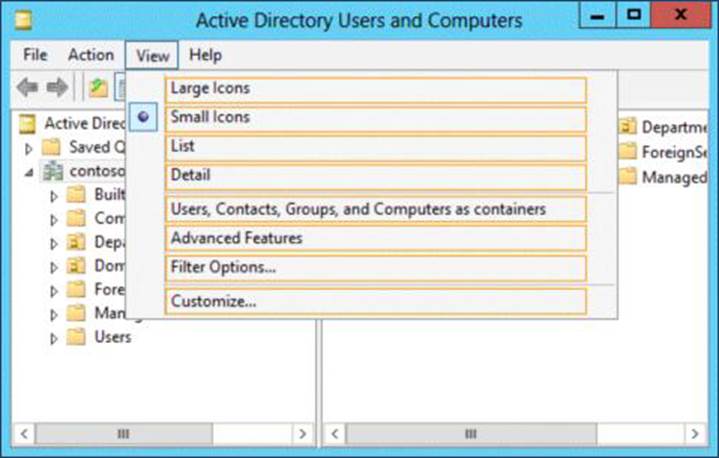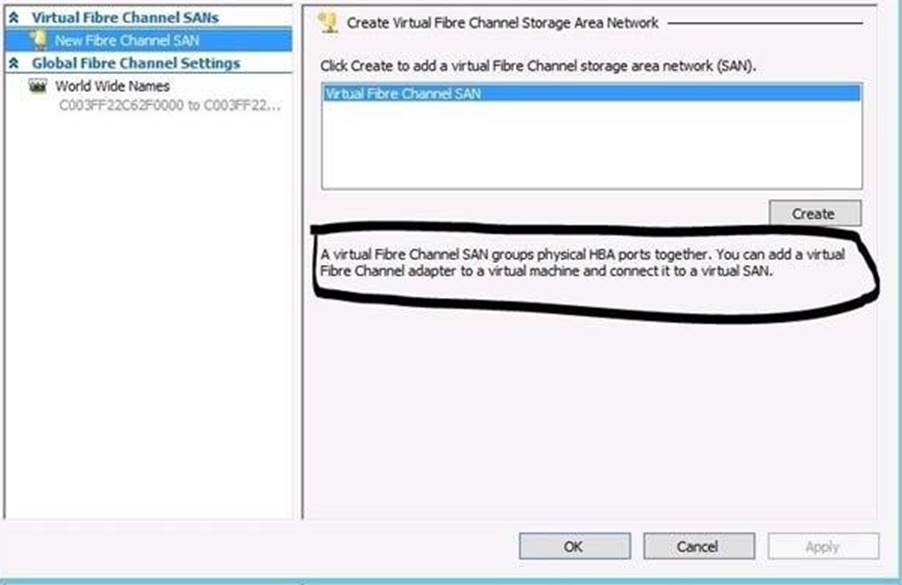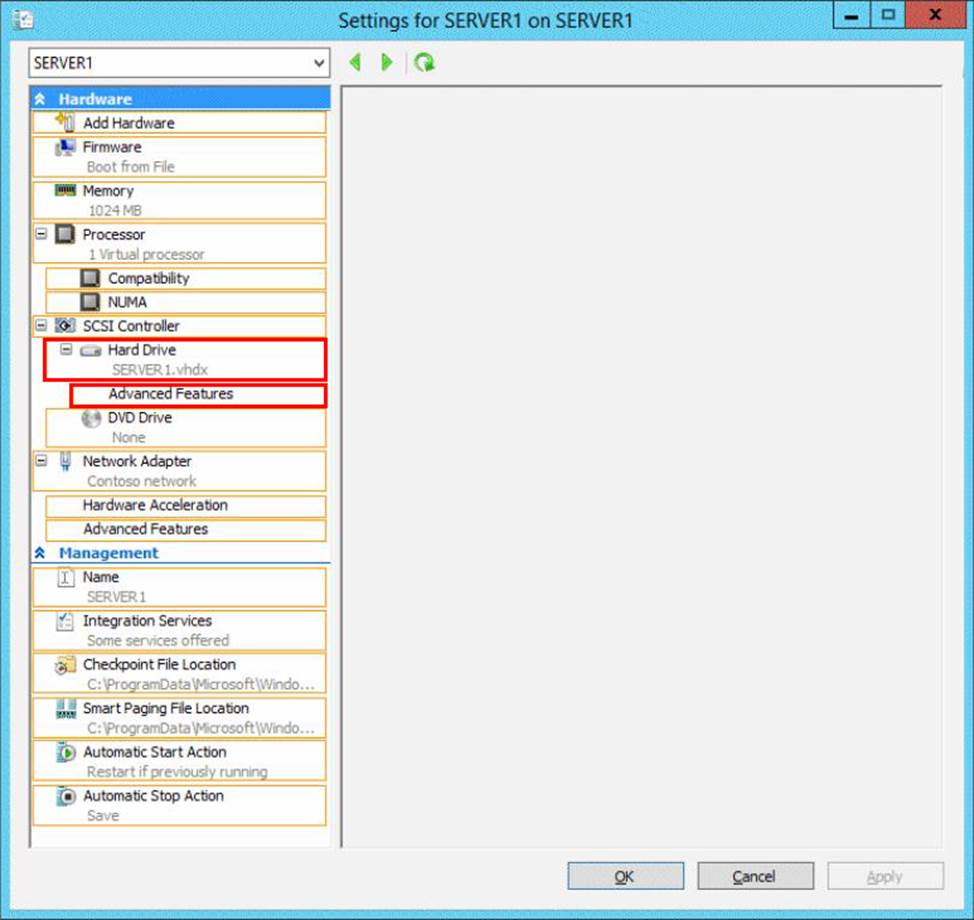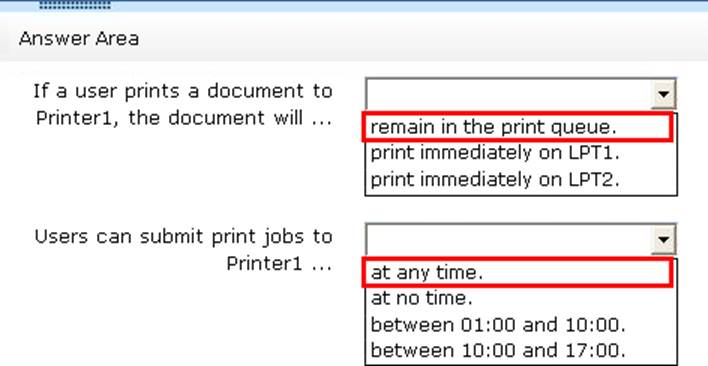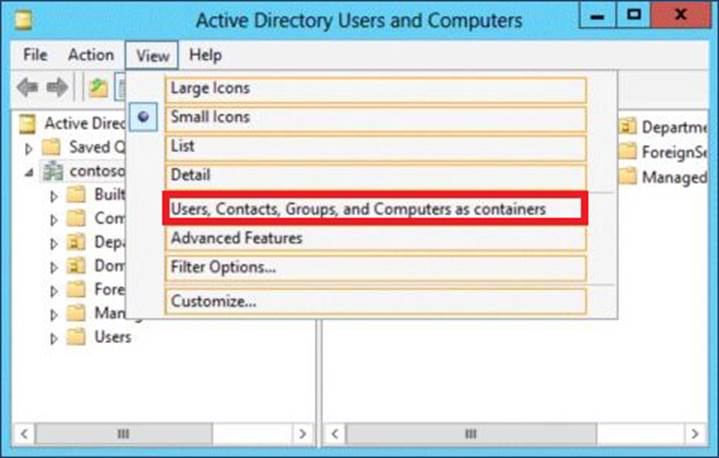Microsoft 70-410 Installing and Configuring Windows Server 2012 Online Training
Microsoft 70-410 Online Training
The questions for 70-410 were last updated at Dec 16,2025.
- Exam Code: 70-410
- Exam Name: Installing and Configuring Windows Server 2012
- Certification Provider: Microsoft
- Latest update: Dec 16,2025
Topic 1, Volume A
You have a server named Server1 that runs Windows Server 2012 R2. Server1 has the Hyper-V server role installed.
An iSCSI SAN is available on the network.
Server1 hosts four virtual machines named VM1, VM2, VM3, and VM4.
You create a LUN on the SAN to host the virtual hard drive files for the virtual machines.
You need to create a 3-TB virtual hard disk for VM1 on the LUN. The solution must prevent VM1 from being paused if the LUN runs out of disk space.
Which type of virtual hard disk should you create on the LUN?
- A . Dynamically expanding VHDX
- B . Fixed-size VHDX
- C . Fixed-size VHD
- D . Dynamically expanding VHD
Your network contains an Active Directory domain named adatum.com. The domain contains a member server named Host1. Host1 runs Windows Server 2012 R2 and has the Hyper-V server role installed.
Host1 hosts two virtual machines named VM5 and VM6. Both virtual machines connect to a virtual switch named Virtual1.
On VM5, you install a network monitoring application named Monitor1.
You need to capture all of the inbound and outbound traffic to VM6 by using Monitor1.
Which two commands should you run from Windows PowerShell? (Each correct answer presents part of the solution. Choose two.)
- A . Get-VM “VM6″ | Set-VMNetworkAdapter-IovWeight 1
- B . Get-VM “VM5″ I Set-VMNetworkAdapter -IovWeight 0
- C . Get-VM “VM5″ | Set-VMNetworkAdapter -PortMirroring Source
- D . Get-VM “VM6″ | Set-VMNetworkAdapter -AllowTeaming On
- E . Get-VM “VM6″ | Set-VMNetworkAdapter -PortMirroring Destination
- F . Get-VM “VM5″ | Set-VMNetworkAdapter -AllowTeaming On
You have a Hyper-V host named Server1 that runs Windows Server 2012 R2.
Server1 has the virtual switches listed in the following table.

You create a virtual machine named VM1.VM1 has two network adapters. One network adapter connects to vSwitch1. The other network adapter connects to vSwitch2.You configure NIC teaming on VM1.
You need to ensure that if a physical NIC fails on Server1, VM1 remains connected to the network.
What should you do on Server1?
- A . Run the Set-VmNetworkAdaptercmdlet.
- B . Add a new network adapter to VM1.
- C . Create a new virtual switch on Server 1.
- D . Modify the properties of vSwitch1 and vSwitch2.
- E . Run the Set-VmNetworkAdapterAdapterFailoverConfiguration cmdlet.
Your network contains two Hyper-V hosts that run Windows Server 2012 R2. The Hyper-V hosts contain several virtual machines that run Windows Server 2012 R2.
You install the Network Load Balancing feature on the virtual machines.
You need to configure the virtual machines to support Network Load Balancing (NLB).
Which virtual machine settings should you configure?
- A . DHCP guard
- B . Port mirroring
- C . Router guard
- D . MAC address
You have a server named Server1 that runs Windows Server 2012 R2. Server1 has the Hyper-V server role installed.
Server1 is connected to two Fibre Channel SANs and is configured as shown in the following table.

You have a virtual machine named VM1.
You need to configure VM1 to connect to SAN1.
What should you do first?
- A . Add one HBA
- B . Create a Virtual Fibre Channel SAN.
- C . Create a Hyper-V virtual switch.
- D . Configure network adapter teaming.
Your network contains an Active Directory domain named contoso.com. The domain contains a server named Server1. Server1 runs Windows Server 2012 R2 and has the Hyper-V server role installed.
On Server1, you create and start a virtual machine named VM1.
VM1 is configured as shown in the following table.
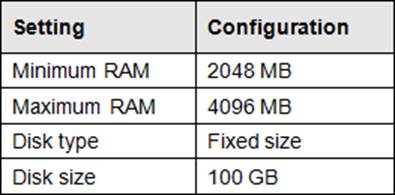
You need to recommend a solution to minimize the amount of disk space used for the checkpoint of VM1.
What should you do before you create the checkpoint?
- A . Run the Resize-VHD cmdlet.
- B . Convert Disk1.vhd to a dynamically expanding disk.
- C . Shut down VM1.
- D . Run the Convert-VHD cmdlet.
HOTSPOT
You have a Hyper-V host named Hyperv1 that runs Windows Server 2012 R2. Hyperv1 hosts a virtual machine named Server1. Server1 uses a disk named Server1.vhdx that is stored locally on Hyperv1.
You stop Server1, and then you move Server1.vhdx to an iSCSI target that is located on another server.
You need to configure Server1 to meet the following requirements:
• Ensure that Server1 can start by using Server1.vhdx.
• Prevent Server1.vhdx from consuming more than 500 IOPS on the iSCSI target.
Which two objects should you configure? To answer, select the appropriate two objects in the answer area.
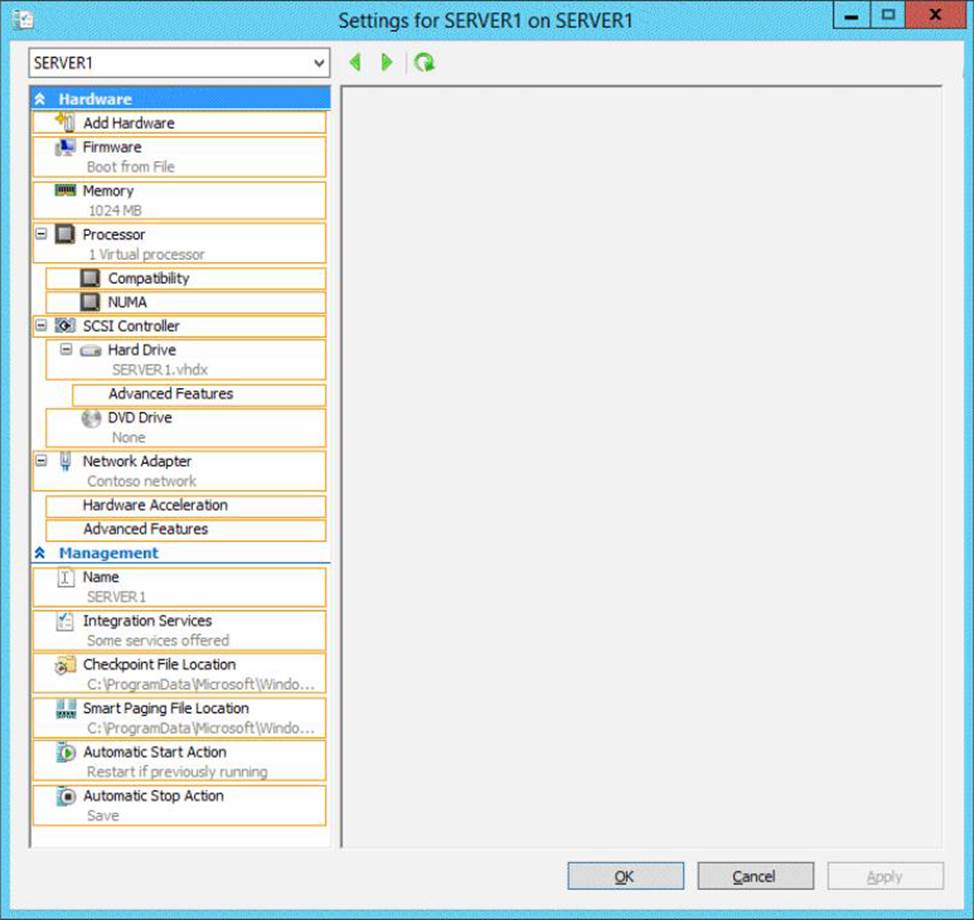
You have a print server named Server1 that runs Windows Server 2012 R2.
You discover that when there are many pending print jobs, the system drive occasionally runs out of free space.
You add a new hard disk to Server1.You create a new NTFS volume.
You need to prevent the print jobs from consuming disk space on the system volume.
What should you modify?
- A . The properties on the new volume
- B . The properties of the Print Spooler service
- C . The Print Server Properties
- D . The properties of each shared printer
HOTSPOT
A printer named Printer1 is configured as shown in the exhibit. (Click the Exhibit button.)
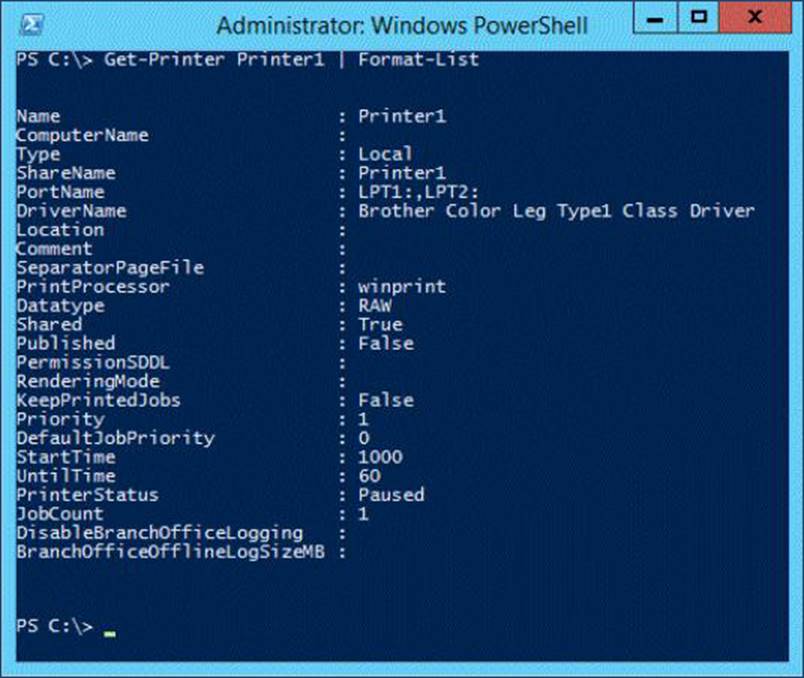
To answer, complete each statement according to the information presented in the exhibit. Each correct selection is worth one point.

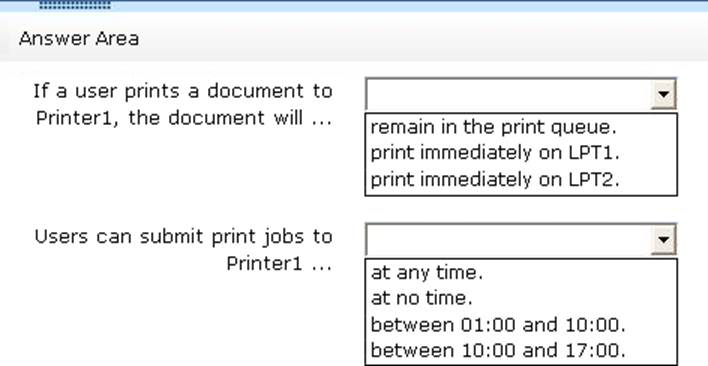
HOTSPOT
Your network contains an Active Directory domain named contoso.com. The domain contains a print server named Server1 that runs Windows Server 2012 R2.
You share several printers on Server1.
You need to ensure that you can view the printer objects associated to Server1 in Active Directory Users and Computers.
Which option should you select?
To answer, select the appropriate option in the answer area.
